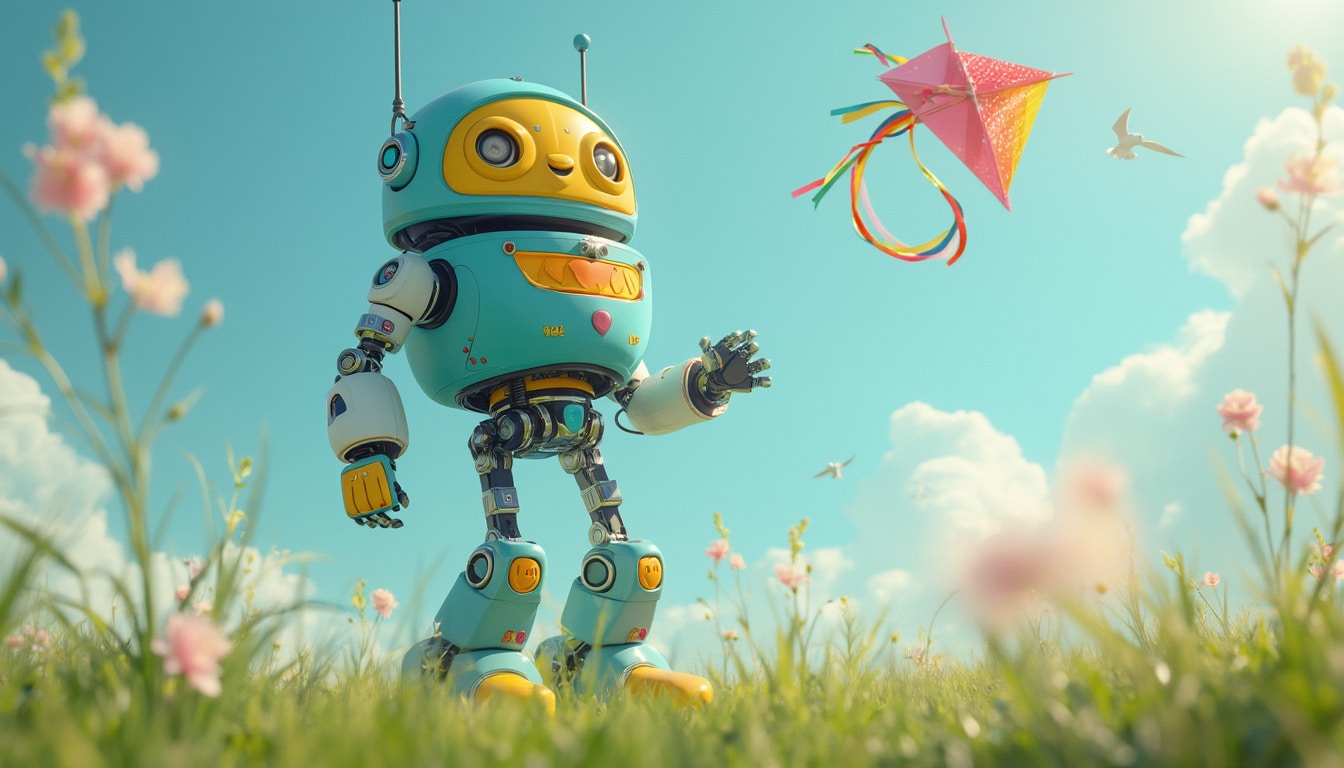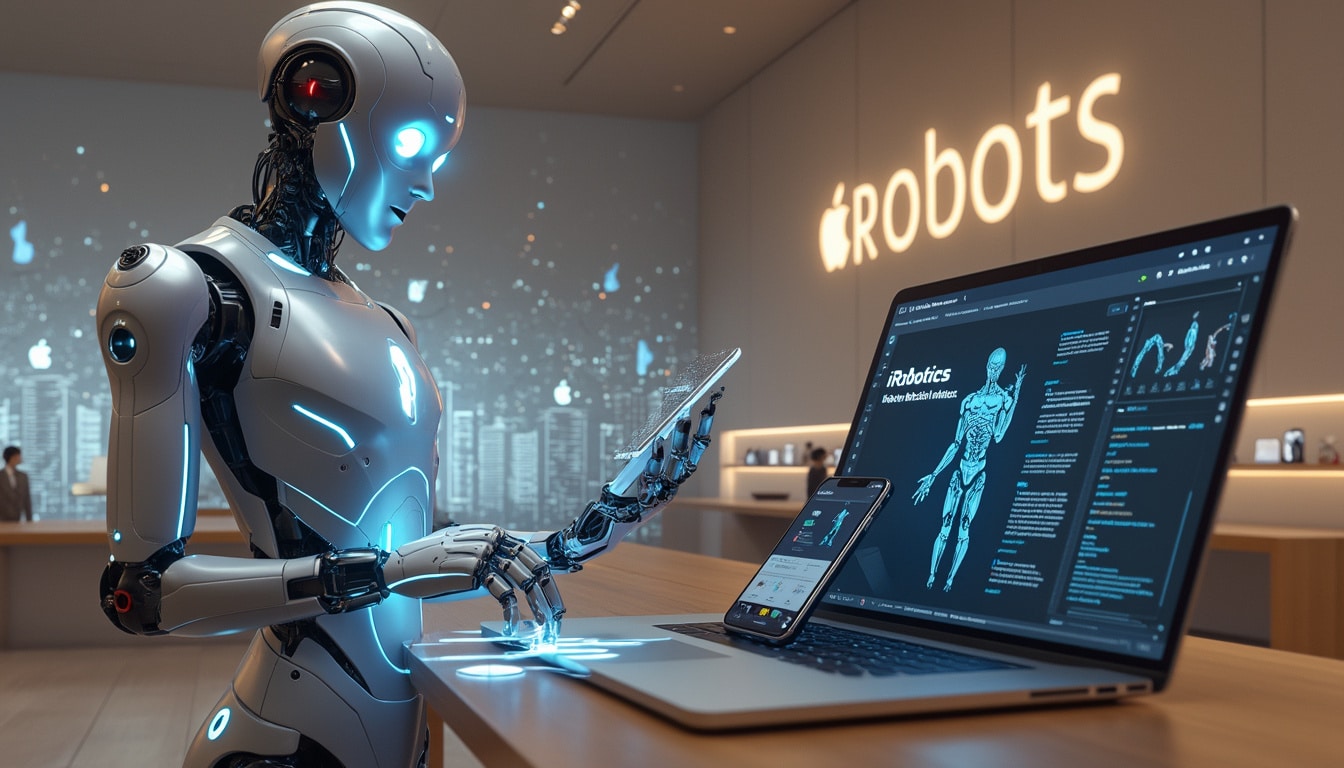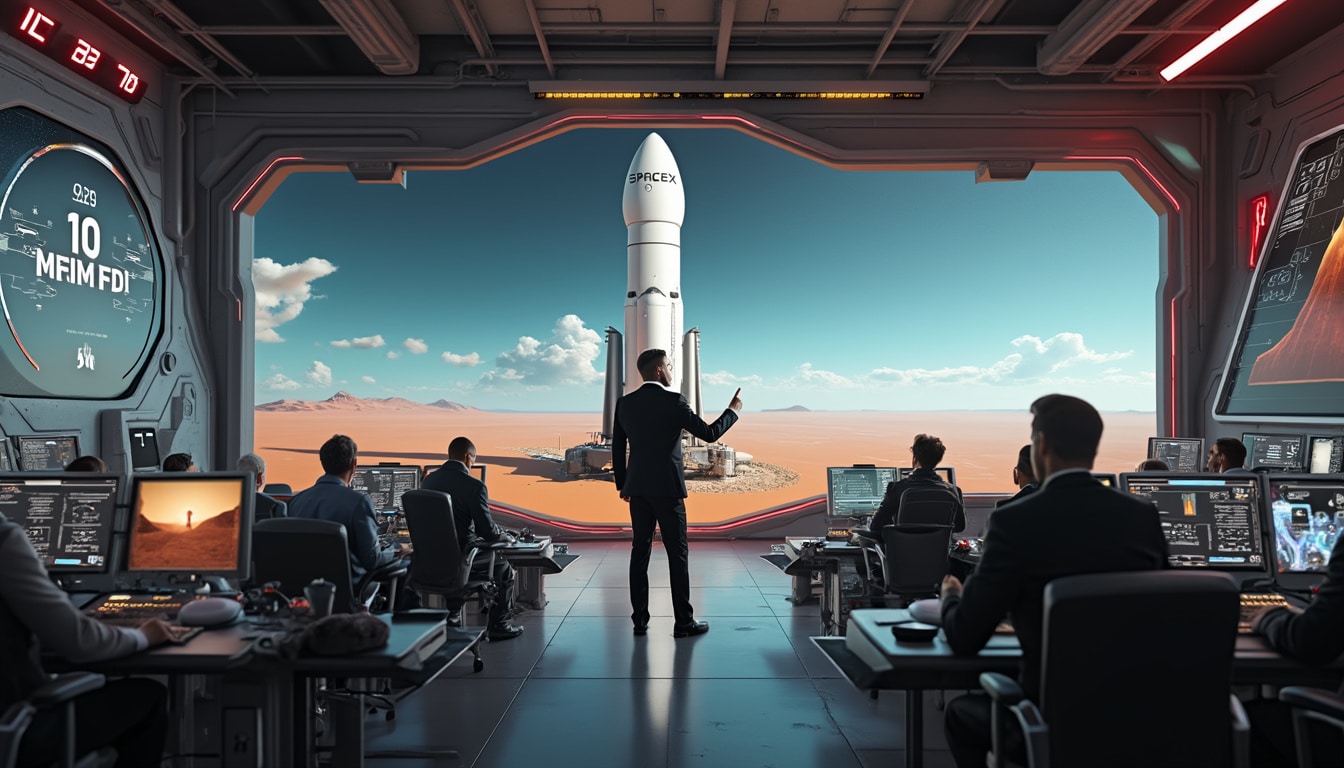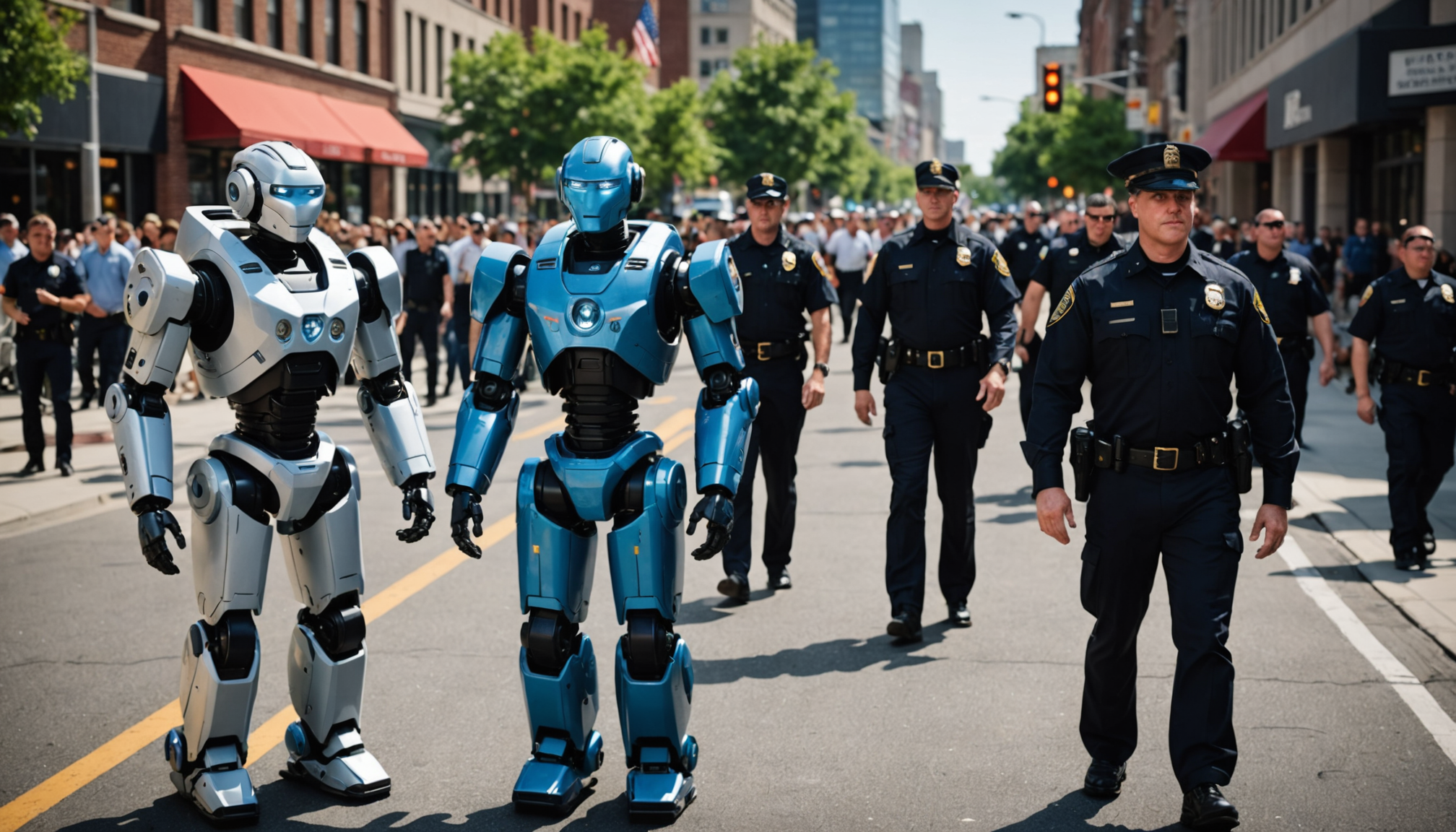« `html
Hold onto your helmets, folks! Kawasaki has just galloped into the future with a groundbreaking invention. Meet CORLEO, the hydrogen-powered robotic horse that’s turning heads everywhere.
In a dazzling display at the Expo Osaka-Kansai, Kawasaki unveiled CORLEO, a machine that defies conventional categories. This innovative creation blends the sleek agility of a feline with the sturdy presence of a warhorse, captivating audiences with its video game-inspired aesthetics. Powered by a 150 cm³ hydrogen engine that emits only water, CORLEO embodies Japan’s commitment to long-term decarbonization goals.
Designed with four articulated legs, CORLEO navigates challenging terrains without the need for wheels or tracks, thanks to its sophisticated AI guidance system. Dr. Shinji Watanabe highlights the robot’s ability to move seamlessly over hills, rocks, and uneven roads, making it a versatile vehicle for areas where traditional transportation fails. Unlike conventional motorized vehicles, CORLEO relies on the rider’s body balance for control, reminiscent of horseback riding rather than typical driving.
During its limited demonstration, CORLEO showcased its posture and slow movements, with no real galloping observed—the demonstration was computer-generated. Kawasaki aims to make this robotic horse operational by 2050, targeting uses such as transporting humans or goods in hard-to-reach zones. While some critics view CORLEO as a mere media stunt, it is part of Kawasaki’s broader industrial strategy, building on their experience with efficient industrial robots like those in the CL series.
On the international stage, competitors like XPeng in China are developing robotic quadrupeds inspired by ponies and unicorns for children, whereas CORLEO is geared towards adults seeking new experiences. Potential applications include adventure tourism, theme parks, and assistance missions, leveraging algorithms that interpret environments to optimize movement. This intelligent system allows CORLEO to navigate obstacles, adjust speed, and maintain balance autonomously, appealing to users who demand high performance without constant control.
However, several challenges remain before CORLEO can become a mainstream success. The reliance on hydrogen requires expensive and limited infrastructure, with storage demanding low temperatures or high pressures. Additionally, the powerful processors needed for CORLEO’s AI can increase energy consumption, and societal acceptance of mechanical horses is yet to be achieved. Depending on the context, CORLEO might evoke either fascination or skepticism.
Despite these hurdles, CORLEO stands as a promising prototype, opening unexpected avenues in robotics and transportation. Its development will be closely watched as Kawasaki continues to push the boundaries of what machines can achieve.
« `
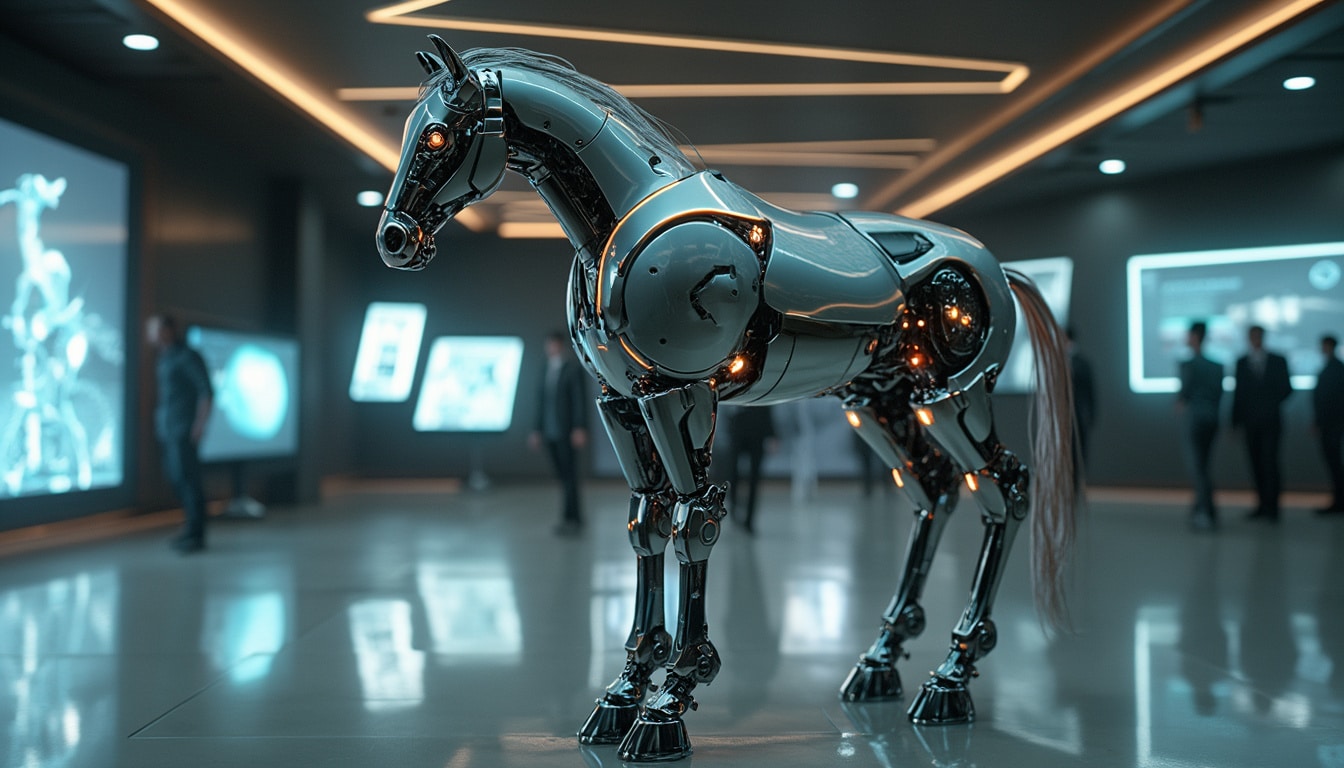
Table of contents
ToggleKawasaki introduces an innovative horse robot that captivates audiences
Kawasaki has once again pushed the boundaries of robotics by unveiling CORLEO, a horse-inspired robot that appears to have leaped straight out of a science fiction movie. Presented at the Expo Osaka-Kansai, CORLEO has garnered significant attention for its unique design and cutting-edge technology. Unlike traditional robots or motorcycles, CORLEO seamlessly blends the grace of a feline with the strength of a warhorse, creating a visually striking machine that sparks both excitement and curiosity.
Powered by a hydrogen engine and guided by advanced artificial intelligence, CORLEO represents a bold step towards sustainable and versatile robotic applications. The robot’s design draws inspiration from video game aesthetics, making it not only a marvel of engineering but also a captivating piece of art. With four articulated legs that move in perfect harmony, CORLEO is engineered to navigate challenging terrains where wheels and tracks might falter, showcasing Kawasaki’s commitment to innovation and versatility in robotics.
The introduction of CORLEO highlights Kawasaki’s dedication to creating robots that are not only functional but also aesthetically pleasing. This approach sets CORLEO apart in a market that is increasingly saturated with robots focused solely on utility. By combining functionality with a compelling design, Kawasaki aims to capture the imagination of both technology enthusiasts and the general public, positioning CORLEO as a symbol of future advancements in robotics.
what makes corleo stand out from traditional robots and motorcycles?
CORLEO distinguishes itself from traditional robots and motorcycles through its unconventional design and advanced technological features. Unlike typical motorcycles that rely on wheels for movement, CORLEO utilizes four powerful, articulated legs that provide unmatched stability and mobility across diverse terrains. This legged movement mimics the agility and flexibility of a horse, allowing CORLEO to traverse obstacles such as rocky surfaces, steep inclines, and uneven ground with ease.
The robot’s AI-driven guidance system is another key differentiator. Equipped with sophisticated sensors and real-time data processing capabilities, CORLEO can adapt its movements dynamically to ensure smooth and balanced navigation. This level of adaptability surpasses that of most traditional robots, which often require predefined pathways and struggle with unexpected changes in their environment.
Moreover, CORLEO’s hydrogen-powered engine sets it apart in terms of sustainability. With a 150 cm³ engine that emits only water, CORLEO aligns with global efforts to reduce carbon emissions and promote eco-friendly technologies. This commitment to sustainability not only enhances CORLEO’s appeal but also positions Kawasaki as a forward-thinking leader in the robotics industry.
In addition to its functional advantages, CORLEO’s aesthetic appeal draws inspiration from video game design, making it visually engaging and memorable. This unique combination of form and function ensures that CORLEO stands out in both the technological and public spheres, attracting attention and sparking conversations about the future of robotics.
how does corleo’s hydrogen-powered engine align with sustainability goals?
The incorporation of a hydrogen-powered engine in CORLEO underscores Kawasaki’s commitment to sustainability and environmental stewardship. CORLEO’s engine has a displacement of 150 cm³ and operates on hydrogen fuel, which reacts with oxygen to produce only water as a byproduct. This clean energy solution significantly reduces the robot’s carbon footprint, aligning with global efforts to combat climate change and promote green technologies.
Japan, Kawasaki’s home country, has long been at the forefront of initiatives aimed at decarbonization. The adoption of hydrogen as a fuel source for CORLEO fits seamlessly within these national objectives, demonstrating Kawasaki’s dedication to contributing to a sustainable future. By choosing hydrogen over traditional fossil fuels, Kawasaki not only minimizes environmental impact but also sets a precedent for other manufacturers in the robotics and transportation sectors.
Furthermore, CORLEO’s design emphasizes energy efficiency and safety. The hydrogen storage system is engineered to operate under safe conditions, managing the challenges associated with storing hydrogen at low temperatures or high pressures. This careful consideration of hydrogen storage solutions ensures that CORLEO remains both environmentally friendly and practical for real-world applications.
In addition to its sustainable engine, CORLEO is designed to be user-friendly. Kawasaki has emphasized that « this vehicle is adapted to beginners, » thanks to its body balance-based control system. Unlike conventional motorcycles that rely on manual controls, CORLEO adjusts its direction based on the pilot’s body weight. This intuitive control mechanism not only makes CORLEO accessible to a wider audience but also reduces the learning curve associated with operating complex machinery.
By integrating hydrogen power and intelligent control systems, CORLEO exemplifies how advanced robotics can contribute to sustainability without compromising on performance or user experience. This harmonious blend of eco-friendly technology and practical design highlights Kawasaki’s innovative approach to addressing global environmental challenges.
what potential applications does corleo have in various industries?
While CORLEO has only been demonstrated in limited settings, its potential applications across multiple industries are vast and promising. Kawasaki envisions CORLEO becoming fully operational by 2050, tailored to meet diverse market needs. One of the primary envisioned uses for CORLEO is in transportation, particularly in areas that are difficult to access by traditional vehicles. Whether transporting humans or goods, CORLEO’s ability to navigate challenging terrains without relying on wheels or tracks makes it an invaluable asset in remote or rugged environments.
In the tourism sector, CORLEO could revolutionize adventure tourism by providing a unique and interactive way to explore natural landscapes. Imagine adventurers traversing mountainous regions or dense forests on the back of a futuristic horse robot, enhancing the experience while minimizing environmental impact. Similarly, in theme parks, CORLEO could be employed as an attraction that combines entertainment with cutting-edge technology, offering visitors a glimpse into the future of robotics.
Beyond recreational uses, CORLEO holds significant potential in public safety and assistance missions. Its ability to maneuver through complex terrains makes it suitable for search and rescue operations, where it can reach areas that are otherwise inaccessible to human responders. Additionally, CORLEO could be integrated into disaster management efforts, providing critical support in the aftermath of natural catastrophes by transporting supplies or aiding in reconstruction tasks.
Kawasaki’s experience with industrial robots, such as those in the CL series capable of welding and heavy lifting, provides a solid foundation for CORLEO’s development. By inheriting the efficiency and reliability of its industrial counterparts, CORLEO is well-positioned to deliver performance that meets the demanding standards of various industries. This versatility ensures that CORLEO is not limited to a single application but can adapt to meet the evolving needs of different sectors.
Moreover, the robot’s advanced AI capabilities enable it to perform tasks autonomously, reducing the need for constant human supervision. This feature is particularly beneficial in scenarios where human intervention is impractical or hazardous, further expanding CORLEO’s range of applications.
how does corleo compare to international competitors and explore playful applications?
The global robotics market is witnessing a surge in innovative quadruped robots, with companies like XPeng in China developing their own versions inspired by ponies and unicorns targeted primarily at children. However, CORLEO differentiates itself by being designed for adults seeking novel experiences and functional applications. While XPeng focuses on playful and educational interactions for younger audiences, CORLEO aims to bridge the gap between entertainment and practical utility for a more mature demographic.
In comparison to Apple’s latest announcements, such as their plans for home robots, CORLEO stands out with its rugged and versatile design tailored for outdoor and demanding environments. While Apple’s robots may emphasize household convenience and integration into smart homes, CORLEO is engineered for robust performance in a variety of terrains, making it more suited for industries like tourism, public safety, and logistics.
The playful applications of CORLEO are equally compelling. In theme parks, for instance, CORLEO can serve as an interactive attraction, allowing visitors to engage with robotics technology in a fun and immersive way. Additionally, CORLEO could be utilized in entertainment events, such as live performances or exhibitions, where its dynamic movements and lifelike appearance can captivate audiences.
Beyond entertainment, CORLEO’s advanced AI and movement capabilities offer opportunities for educational purposes. Interactive demonstrations showcasing CORLEO’s ability to navigate obstacles and perform tasks can inspire the next generation of engineers and robotics enthusiasts. By providing a tangible example of cutting-edge technology, CORLEO can play a significant role in STEM education and innovation.
Another playful yet practical application lies in personal assistance. Imagine CORLEO as a companion robot that can assist with everyday tasks in challenging environments, such as carrying groceries over uneven sidewalks or navigating through outdoor events. This blend of functionality and entertainment positions CORLEO as a versatile tool that appeals to a wide range of users.
what challenges does corleo face on its path to market
Despite its impressive design and technological advancements, CORLEO faces several significant challenges before it can become a mainstream product. One of the primary obstacles is the infrastructure required for hydrogen fuel. Hydrogen storage and distribution systems are still in their infancy, with high costs and limited availability hindering widespread adoption. CORLEO’s reliance on hydrogen means that establishing a robust and accessible refueling network is essential for its practical use, especially in regions where such infrastructure is not yet developed.
Additionally, hydrogen storage poses technical challenges, as it requires maintaining low temperatures or high pressures to ensure safety and efficiency. These requirements complicate the logistics of managing hydrogen-powered vehicles and robots, potentially increasing production and operational costs. Addressing these storage issues is crucial for making CORLEO a viable option for consumers and businesses alike.
The advanced AI technology that powers CORLEO also presents challenges. High-performance processors are necessary to enable real-time data processing and adaptive movement control. However, these processors can be energy-intensive, potentially impacting CORLEO’s overall energy efficiency and sustainability. Balancing the computational demands of AI with the need for energy conservation is a delicate task that Kawasaki must navigate to optimize CORLEO’s performance.
Another significant hurdle is social acceptance. The concept of a mechanical horse may evoke mixed reactions, ranging from fascination to skepticism. Public perception of robotic animals can vary widely based on cultural contexts and individual preferences. Building trust and demonstrating the practical benefits of CORLEO are essential steps in overcoming any apprehensions and ensuring widespread acceptance.
Moreover, Kawasaki must address the competitive landscape, where numerous companies are developing their own robotic innovations. Staying ahead in terms of technology, design, and functionality is critical for CORLEO to secure a strong market position. Continuous research and development, coupled with strategic partnerships, will be key to maintaining CORLEO’s competitive edge.
In addition to these challenges, ensuring the reliability and durability of CORLEO in various operating conditions is paramount. The robot must withstand different weather conditions, terrains, and usage scenarios without compromising performance or safety. Rigorous testing and quality assurance processes are necessary to guarantee that CORLEO meets the high standards required for diverse applications.
Ultimately, while CORLEO represents a groundbreaking advancement in robotics, addressing these challenges is essential for its successful integration into the market. Kawasaki’s ability to navigate these obstacles will determine CORLEO’s impact and longevity in the rapidly evolving field of robotics.
exploring corleo’s role alongside other technological innovations
CORLEO’s introduction adds to a growing ecosystem of robotic innovations that are transforming various aspects of our lives. Just as new technologies are revolutionizing culinary advancements, CORLEO exemplifies how robotics can redefine mobility and functionality across different domains. This robot not only showcases advanced engineering but also highlights the potential for robotics to enhance and expand human capabilities in diverse settings.
Furthermore, the development of CORLEO complements other advancements in the robotics industry, such as TongTong 2.0, which aims to capture the playful essence of childhood through its design and functionality. While TongTong 2.0 focuses on embodying the spirit of youth, CORLEO emphasizes resilience and adaptability, demonstrating the broad spectrum of applications that robotic technology can address.
In the realm of public safety, robots are increasingly being integrated into security operations. CORLEO’s potential role in assisting public safety missions aligns with these developments, offering a versatile tool that can operate autonomously in complex environments. This synergy between different robotic technologies underscores the collaborative potential within the industry to enhance safety and efficiency in public spaces.
The entrepreneurial spirit driving innovations like CORLEO is reminiscent of stories where former employees have left companies like OpenAI to build their own empires. Kawasaki’s initiative to develop CORLEO reflects a similar drive to pioneer new technologies and explore uncharted territories in robotics. This proactive approach ensures that Kawasaki remains at the forefront of technological advancements, continually pushing the limits of what robots can achieve.
In conclusion, CORLEO’s emergence is not an isolated event but part of a broader trend of integrating advanced robotics into everyday life. By examining CORLEO alongside other technological innovations, it becomes clear that we are entering an era where robots will play increasingly significant roles in various sectors, from entertainment and education to public safety and beyond.









